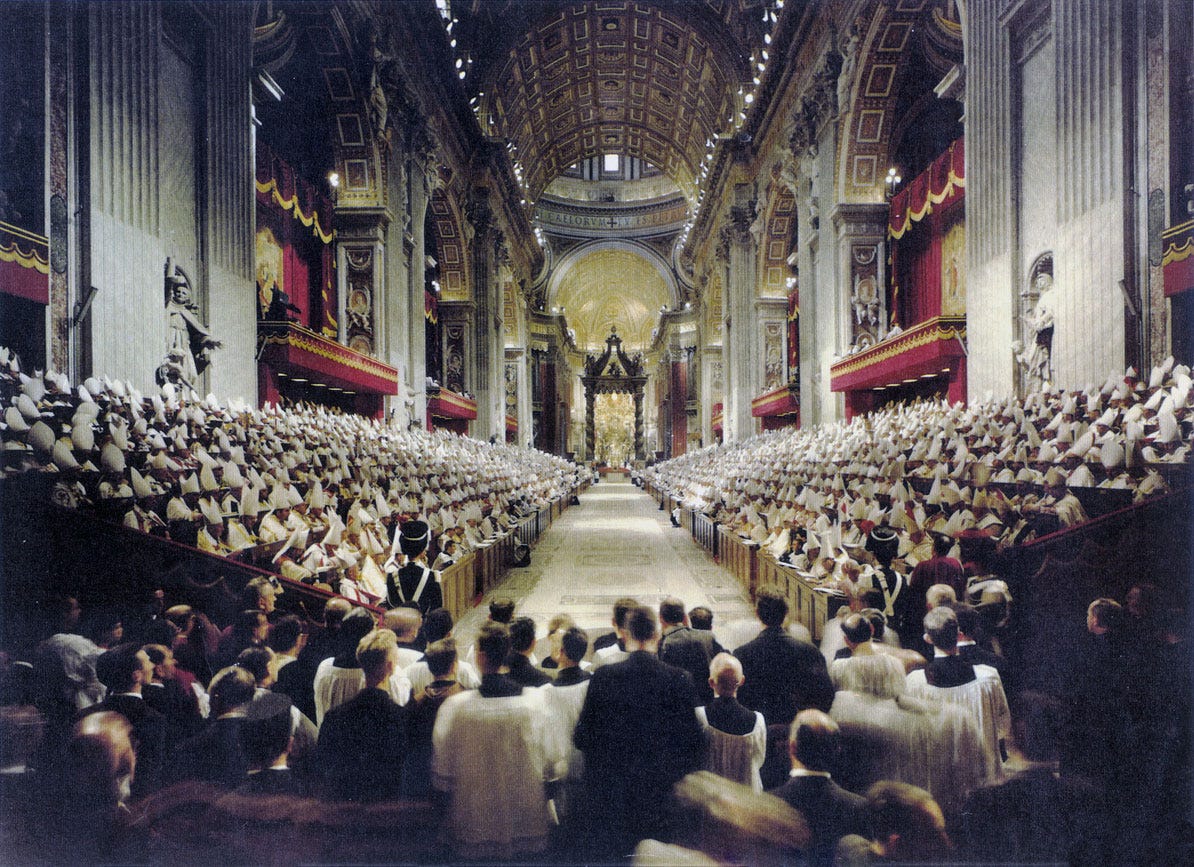Ecumenical councils and their aftermath
'I reject rejection of Vatican Council II. But traditionalists do have a point.'
Much attention has been given this year to the 1700th anniversary of the Council of Nicaea.
And at the risk of sounding trite as I state the obvious, the council is one of the most consequential events in the history of the Church.
Called by an emperor, the Nicene council established the ecclesiological principle of an “ecumenical council” as a means of adjudicating in definitive, if not dogmatic, ways between heterodox and orthodox theological views. Indeed, its condemnations of Arius and its promotion of the full divinity of Christ using the innovative philosophical language of “homoousios” (consubstantial), did more than just define a doctrine of the Church, but also went a long way toward establishing the apostolic authority of the college of bishops to formulate binding dogmas for the entire Church.
But what of the council’s aftermath?
The triumphalist and romantic retelling of the Nicene narrative presents the aftermath unproblematically as the triumph of orthodoxy over heresy (which it was in its essence) in a manner which would suggest that for those involved in the debates, the lines of demarcation between truth and error were rather clear cut. The narrative also comes complete with hagiographic heroes like St. Nicholas yanking on the beard of Arius (and/or slapping him for good measure), and with morality tales, which highlight the ignominious death of Arius from some mysterious bowel disease wherein his entire innards apparently (so the narrative goes) came violently spilling out, serving as a demonstration of a just divine recompense for his blasphemies.
But the actual aftermath of the council was not so clean-cut.
Keep reading with a 7-day free trial
Subscribe to The Pillar to keep reading this post and get 7 days of free access to the full post archives.



